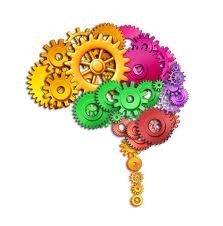Fidgeting, distractions, and endless unfinished tasks. Majority of children with ADHD experience these difficulties daily. Studying with ADHD is challenging. Fortunately, there are numerous techniques that can build the skills needed to successfully face the daunting challenges of studying.
Schedule everything
From cleaning up their toys to cramming their studying the night before a test, it’s not a secret that children love to leave everything to the last minute. Creating a study and homework planner will not only help your child remember their to-do lists, but will also allow them to move past the initial paralysis stage of studying. Building a consistent routine at school and at home will allow your child to stay focused and effectively manage their time. Just remember to be realistic, schedule some down time when your child comes home from school so that they can unwind after their long day.
Exercise sharpens focus
Imagine that this is your child’s brain:

In order to stay focused and concentrate on the task at hand, the wheels of the brain need to function effectively. Fortunately, recent evidence has revealed that regular engagement in physical exercise, specifically aerobic exercise, can grease the wheels of executive brain function (Paul, 2017). A study by Voss and colleagues (2011) found that regular aerobic fitness had a significant impact on brain activity, such as response execution, cognitive control, and modulating tasks. So, get those dusty bicycles out of your garage and take your child for a ride!
Subject shifting
Many children with ADHD struggle to maintain concentration when doing tasks that do not appeal to them. Encouraging your child to shift between subjects for short periods of time enables them to maintain attention and be more productive. However, it is important to note the difference between ‘shifting’ and ‘multitasking’ – shifting involves alternating between subjects when a child begins to lose their attention. Shifting back and forth between homework tasks allows your child to have a break from one subject while working on another. Using a 5-20-minute timer is a great way to keep track of time and to help prevent daydreaming.
Visual reminders and memory cues
It’s common for children with ADHD to experience problems with their working memory. Homework gets left at school, they forget to bring the right books home, and learning multiplication tables is almost impossible. To improve your child’s memory skills, help them create visual reminders like drawing pictures and colour-coding subjects. Help them prepare important reminders and handouts on coloured paper, and encourage them to use self-stick notes at school and around the home.
Time for a rest!
For children with ADHD, research indicates that they are likely to have difficulties sleeping due to abnormal REM sleep (Teel, 2016). Not surprisingly, sleep is important in helping us maintain our concentration and focus during daily tasks. Therefore, taking breaks during studying assists working memory processes and enables the brain to review new information. So, allowing your child to take a 30-minute nap in the afternoon can really help!
References:
Paul, A. (2017). The Science of Smart: A Surprising Way To Improve Executive Function – Secret Life of Scientists and Engineers — Secret Life of Scientists and Engineers | PBS. Pbs.org. http://www.pbs.org/wgbh/nova/blogs/secretlife/blogposts/the-science-of-smart-surprising-way-to-improve-executive-function/
Teel, P. (2016). ADHD and Sleep. Psych Central. Retrieved on August 16, 2017, from https://psychcentral.com/lib/adhd-and-sleep/
Voss, M. W., Chaddock, L., Kim, J. S., Vanpatter, M., Pontifex, M. B., Raine, L. B., et al. (2011a). Aerobic fitness is associated with greater efficiency of the network underlying cognitive control in preadolescent children. Neuroscience, 199, 166–176.





